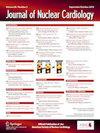利用基于 CCTA 的放射组学机器学习提名图预测慢性心肌缺血
IF 2.7
4区 医学
Q2 CARDIAC & CARDIOVASCULAR SYSTEMS
引用次数: 0
摘要
背景:冠状动脉计算机断层扫描(CCTA)是评估冠状动脉疾病(CAD)的一种成熟的无创诊断测试。CCTA不仅能提供管腔狭窄的信息,还能基于放射组学对狭窄进行无创评估和定量测量。目的:本研究旨在开发和验证一种基于CT的放射组学机器学习,用于预测慢性心肌缺血(MIS):方法:回顾性分析了154名CAD患者的CCTA和SPECT-心肌灌注成像(MPI),其中94名患者被诊断为慢性心肌缺血。患者被随机分为两组:训练组(107 人)和测试组(47 人)。提取每张 CCTA 横断面图像的特征,以识别心肌节段。在降低特征维度后,使用多变量逻辑回归建立放射组学特征。最后,根据 MIS 预测模型建立放射组学提名图,该模型又是通过机器学习结合临床相关因素建立的。然后,我们利用 49 名 CAD 患者的数据对该模型进行了验证,并纳入了另一个医疗中心的 18 名 MIS 患者。接受者操作特征曲线评估了基于训练集的提名图的诊断准确性,并通过测试集和验证集进行了验证。决策曲线分析(DCA)用于验证提名图的临床实用性:在训练集、测试集和验证集中,提名图预测 MIS 的准确率分别为 0.839、0.832 和 0.816。提名图、特征和血管狭窄的诊断准确率分别为 0.824、0.736 和 0.708。根据提名图,高危组和低危组的 MIS 患者人数存在明显差异(P < .05)。DCA曲线表明该提名图在临床上是可行的:基于 CCTA 图像构建的放射组学提名图是预测 MIS 的无创工具,有助于识别冠心病高危患者。本文章由计算机程序翻译,如有差异,请以英文原文为准。
Predicting Chronic Myocardial Ischemia Using CCTA-Based Radiomics Machine Learning Nomogram
Background
Coronary computed tomography angiography (CCTA) is a well-established non-invasive diagnostic test for the assessment of coronary artery diseases (CAD). CCTA not only provides information on luminal stenosis but also permits non-invasive assessment and quantitative measurement of stenosis based on radiomics.
Purpose
This study is aimed to develop and validate a CT-based radiomics machine learning for predicting chronic myocardial ischemia (MIS).
Methods
CCTA and SPECT-myocardial perfusion imaging (MPI) of 154 patients with CAD were retrospectively analyzed and 94 patients were diagnosed with MIS. The patients were randomly divided into two sets: training (n = 107) and test (n = 47). Features were extracted for each CCTA cross-sectional image to identify myocardial segments. Multivariate logistic regression was used to establish a radiomics signature after feature dimension reduction. Finally, the radiomics nomogram was built based on a predictive model of MIS which in turn was constructed by machine learning combined with the clinically related factors. We then validated the model using data from 49 CAD patients and included 18 MIS patients from another medical center. The receiver operating characteristic curve evaluated the diagnostic accuracy of the nomogram based on the training set and was validated by the test and validation set. Decision curve analysis (DCA) was used to validate the clinical practicability of the nomogram.
Results
The accuracy of the nomogram for the prediction of MIS in the training, test and validation sets was 0.839, 0.832, and 0.816, respectively. The diagnosis accuracy of the nomogram, signature, and vascular stenosis were 0.824, 0.736 and 0.708, respectively. A significant difference in the number of patients with MIS between the high and low-risk groups was identified based on the nomogram (P < .05). The DCA curve demonstrated that the nomogram was clinically feasible.
Conclusion
The radiomics nomogram constructed based on the image of CCTA act as a non-invasive tool for predicting MIS that helps to identify high-risk patients with coronary artery disease.
求助全文
通过发布文献求助,成功后即可免费获取论文全文。
去求助
来源期刊
CiteScore
5.30
自引率
20.80%
发文量
249
审稿时长
4-8 weeks
期刊介绍:
Journal of Nuclear Cardiology is the only journal in the world devoted to this dynamic and growing subspecialty. Physicians and technologists value the Journal not only for its peer-reviewed articles, but also for its timely discussions about the current and future role of nuclear cardiology. Original articles address all aspects of nuclear cardiology, including interpretation, diagnosis, imaging equipment, and use of radiopharmaceuticals. As the official publication of the American Society of Nuclear Cardiology, the Journal also brings readers the latest information emerging from the Society''s task forces and publishes guidelines and position papers as they are adopted.

 求助内容:
求助内容: 应助结果提醒方式:
应助结果提醒方式:


